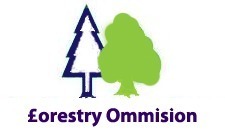Following my last post about the proposed sell-off of the public forest estate, where I outlined the Government’s five models for new ownership, I thought that readers would be interested in the overarching framework for the consultation, as explained by Caroline Spelman in her foreword to the leaked draft consultation.
The consultation was originally intended to run from 27th October 2010 until 19th January 2011 but was delayed, presumably due to the emerging depth of public antagonism. I reproduce below the main sections from the foreword:
New directions for the Forestry Commission public forest estate in England
“The Government believes we need to protect the environment for future generations, make our economy more environmentally sustainable, and improve our quality of life and well-being.” The Coalition: Our programme for Government.
By shifting the emphasis to the Big Society, the Government will focus on what only Government can do. In relation to forestry, this means providing technical advice and the policy and regulatory framework which enable all of England’s woodlands, forests and trees to continue to provide a wide range of public benefits, stimulating an expansion of woodland cover and doing so in the most cost effective way for the taxpayer, both now and in the future. It also means a move away from the Government owning [sic] and managing significant areas of woodlands in England. Already 69% of wooded areas in England are privately owned, with the Forestry Commission’s public forest estate covering 18% and other publicly owned land comprising the remaining 13%. We want this balance to be shifted further with a diminishing role for Government ownership and management whilst ensuring appropriate future management and ownership, particularly for our national treasures, and ensuring even more benefits flow to society from our woods and forests.
Through developing a new strategic approach to forestry and the supporting framework we will create new opportunities for private sector businesses, individuals, NGOs and community groups to take on the management and ownership of England’s woodlands, forests and trees and to play a greater role in conserving our biodiversity, protecting our environment and supporting a more competitive English forestry sector. We will look to amend the legislative framework via the Public Bodies Bill (which is scheduled to be introduced into Parliament shortly) and will explore a range of ownership and management options that could deliver benefits for users and taxpayers. This could include community organisations running their local greenspace, environmental bodies managing woods for biodiversity or commercial forest enterprises increasing profitability of timber, recreation, energy and other business opportunities.
Woods and forests in England in general provide many public benefits. We know these benefits are highly valued by society and that woods provide them cost effectively. We also know that the public forest estate makes a valuable contribution to these benefits.
A range of measures are available to Government to preserve these benefits including grant incentives, access protection and rights of way, tree felling regulation and local planning control. Government is seeking advice through this Public Consultation on how public benefits might be further protected in the future.
… This consultation is asking for your views on a much deeper [than the already agreed 15% sell-off between 2011-15] transformation of the relationship between central government and our forest resource. We are consulting widely on our proposals to inform the approach we take to moving the Forestry Commission public forest estate into new models of ownership that will enable society to generate greater value from it.
Caroline Spelman. Secretary of State for the Environment, Food and Rural Affairs

I won’t add further comment here but look forward to a lively debate through the comments feature.
Gabriel Hemery
 This work is licensed under a Creative Commons Attribution- NonCommercial- NoDerivs 3.0 United States License.
This work is licensed under a Creative Commons Attribution- NonCommercial- NoDerivs 3.0 United States License.

It is clear from comments on other posts in this blog, that there are strongly-held views on – and deep mistrust in – the motives of the current (or any?) Government when it comes to publicly-owned forest, at least in England. I doubt that passionate prejudices will be overcome by an online debate or a public consultation, but it has to be worth trying! I’ts good to see this blog addressing the complex issue of public ownership of forest in an even-handed way.
It seems to be not so much an issue of WHETHER woodland should be publicly owned, but HOW MUCH of it should be publicly owned. Seems like a reasonable debate, given that we already have different models of ownership, as you point out elsewhere in this blog.
The briefing paper prepared for Parliament (not Government alone) might be a useful background document for the online debate and consultation. http://www.parliament.uk/briefingpapers/commons/lib/research/briefings/SNSC-05734.pdf